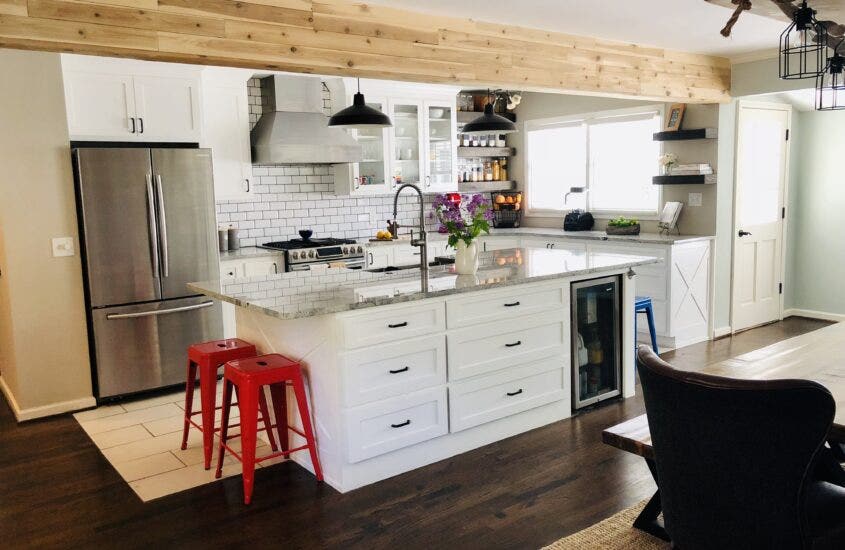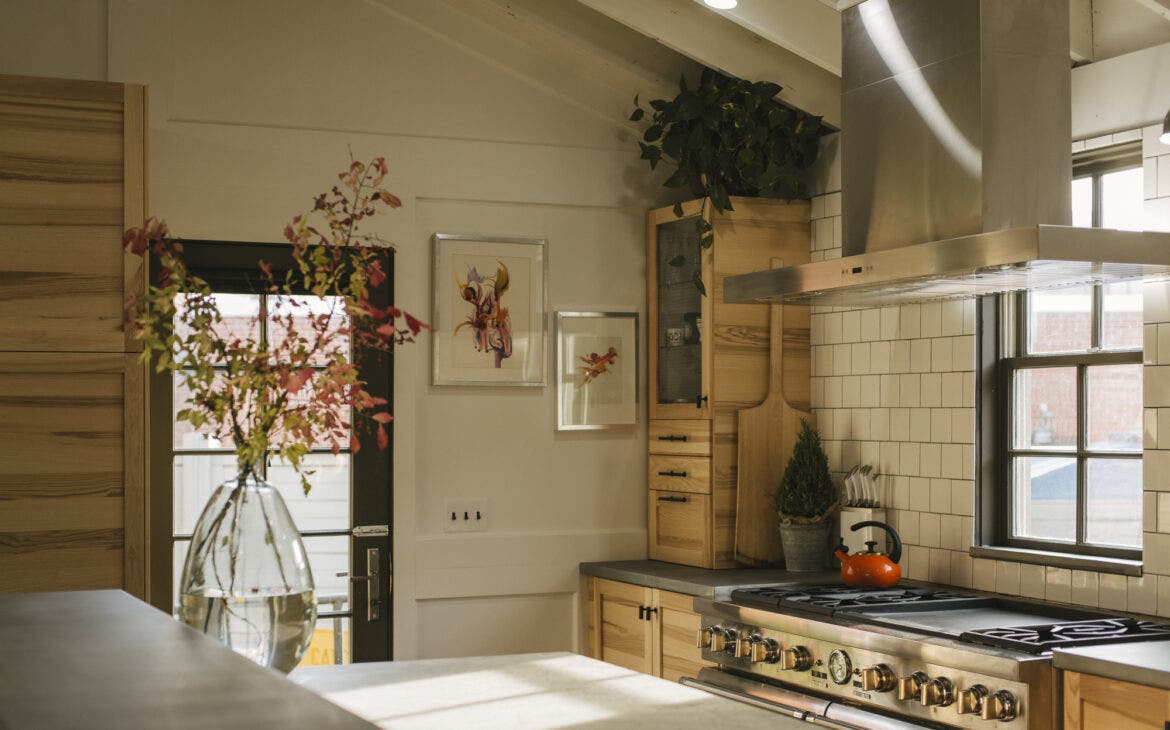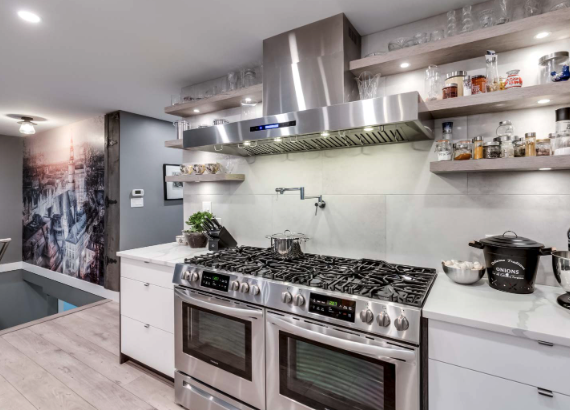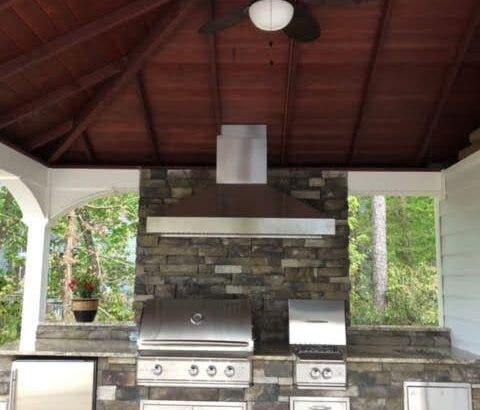Range Hood VexAir Inline Blower Install

At Proline Range Hoods, all of our range hoods come with a pre-installed and factory-tested local blower, excluding our fully customizable ProV models. With these range hoods, you have the option to choose between up to three different types of blowers:
- 1200 CFM VexAir Local Blower
- 1700 CFM VexAir Local Blower
- 1300 CFM VexAir Inline Blower
If you purchase the inline blower option, you’ll have to either install it yourself or hire a contractor. We want to make the installation process easier for whoever is installing your range hood blower, which is why we’ve provided this step-by-step guide on how to install our VexAir inline blower.
Note that the larger your ductwork, the more efficient the blower in your range hood will be able to filter unwanted contaminants out of your home. Larger ductwork allows for more air to be pushed through your vents, cleaning your kitchen quickly and efficiently.
Depending on the CFM, some hoods may require a minimum diameter for your ductwork; just make sure you are aware of this before you proceed with the installation. If you would like more information on making sure you have the right size ductwork for your kitchen hood, check out the article we wrote here.
This detailed guide below corresponds with our VexAir blower installation video; check it out below.
Table of Contents
How to Install a VexAir Inline Blower

For the purposes of this article, we’ll be installing an 1100 CFM VexAir Inline Blower and running 10-inch ductwork.
What’s in the Box
Our range hood blowers don’t just come by themselves. We provide a few necessary parts to help you complete your installation.
- 1100 CFM VexAir Inline Blower
- Hardware Bag (includes four screws, four nuts, and four bolts)
Note: You won’t need to assemble and attach a mounting bracket; it will already be attached to the blower out of the box.
Other Supplies or Tools You’ll Need
- Drill or screwdriver
- Four grabber screws
- 12 self-tapping screws (these will go through metal)
- Aluminum foil duct tape
- Transition pieces – for this installation, you’ll need two 12-inch to 10-inch transitions
Step 1 – Find a Place for Your Blower

There are three things to consider when deciding where to place your inline blower.
First, there has to be enough space for your blower to fit inside your wall or in your attic. Second, your ductwork has to be strong enough to support the weight of the blower. Third, depending on the weight of your blower, you’ll likely want to screw it into a nearby wall to ensure that your ductwork doesn’t collapse. Use rigid single wall ductwork for maximum support.
Step 2 – Build the Mounting Bracket and Attach It to the Blower
This step as shown in the video is no longer necessary. We now simply attach the brackets before shipping; for your convenience, they are already attached to the blower when you receive them. Proceed to Step 3.
Step 3 – Mount the Blower to Your Wall or Ceiling
The most important thing to consider when mounting your blower is which direction it will face. The blowers have a sticker which has an arrow, pointing in the direction of the air will flow When mounted, the direction of your arrow should point toward the outside of your home – where you want the air to go – and not to your range hood unit.
If possible, find studs to mount the blower; they are the most reliable support system. To mount the blower, lift it up against the wall or support and then screw the blower into the wall using the four grabber screws provided.
If you need a drill or screwdriver, check out these reliable products from Amazon below:
Step 4 – Attach Transition Pieces (if necessary)
Depending on the size of your ductwork and the size of your blower, you may need transition pieces. For this installation, our blower is 12 inches in diameter, and the ductwork is 10 inches in diameter, so we’ll use two 10 to 12-inch transition pieces.
First, line up the transition piece with your blower. Next, screw three of your self-tapping screws into the top bottom and side of each transition piece.
After the transition piece is screwed into the blower, wrap your aluminum foil duct tape a couple of times around the transition piece to secure it in place and make the ductwork airtight.

Step 5 – Attach Transitions to Your Ductwork
In this step, you’ll essentially repeat step 4, except this time you’ll attach the transition pieces to your ductwork.
Align the transition pieces with your ductwork and use three self-tapping screws on each side to fasten the blower in place.
As in step four, seal the ductwork with aluminum foil tape to make it airtight.
Click here to see how your ductwork should look at this point in the installation process.
Step 6 – Run Power to the Blower
Since this blower will be within your ductwork, you likely won’t have an outlet in your attic. So, use an extension cord and run it to your nearest outlet to power your blower.
If an extension cord is not enough, consult an electrician to ensure that you complete this step properly. Depending on where you live, you’ll have different requirements for how and where you can run power.
Once you’ve hooked up your power, you’re good to go. Go turn it on and make sure it works the way you expect it to. If for any reason it doesn’t, give us a call at (877)-901-5530.
Hopefully this guide on installing your VexAir inline blower has saved you some valuable time and effort. If you have found any of our blog content helpful in any way, please leave us a review on Yelp or Google. It only takes 10 seconds!
As an Amazon Associate, we earn from qualifying purchases.







Comments are closed.